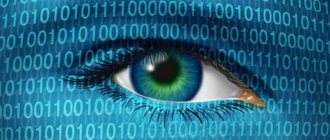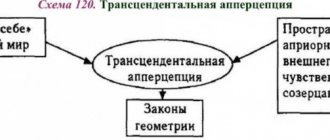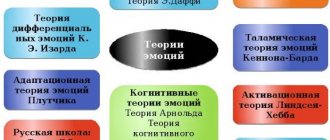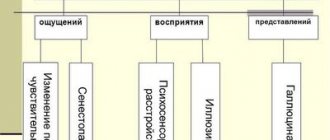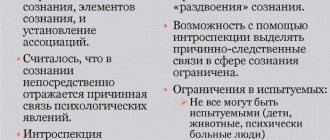Judgment as a form of thinking contains two types of information:
- the main one, which finds explicit expression in the subject and predicate of the judgment, in the logical connective and quantifiers;
- additional, which relates to the characteristics of the logical or factual status of a judgment, to its evaluative and other characteristics (the modality of the judgment).
Modality is additional information explicitly or implicitly expressed in a judgment about the degree of its validity, logical or factual status, about its regulatory, evaluative and other characteristics.
It may be expressed in separate words, or it may not have an explicit expression. In this case, it is revealed by analyzing the context.
Judgments are called modal when they not only note the connection between the subject and the predicate, but also characterize this connection or express the attitude of the author of the judgment towards it.
Words indicating the nature of the connection are called modal operators . Sometimes they are not stated directly, but from the context it is clear that they are implied.
In general, the modality of any judgment (p) can be represented using the operator M according to the scheme Mp, for example: “P is necessary.”
More about modal characteristics
Modal characteristics of judgments are usually expressed in pair categories: necessity - accident, obligation - prohibition, proven - disproven, etc.
One of these characteristics is considered strong - for example, necessity, while the other, defined through the negation of the first, is considered weak - for example, chance.
Let us consider the epistemic, deontic and alethic modalities of judgments that are cognitively important and of particular significance for legal thinking.
Alethic modality
In traditional logic, the so-called alethic modalities (from the Greek aletheia - truth, i.e. true, authentic) are most fully studied, in which the degree of indissolubility, immutability of the binding connection between the subject and the predicate is noted: sometimes it can be necessary, sometimes only possible, in other cases the judgment simply notes the factual connection of an object and its properties without further clarification.
Alethic modality is information expressed in a judgment in terms of “necessity-accidentality” or “possibility-impossibility” about the logical or factual determinacy (conditionality) of the judgment.
The judgments with which we operate are accepted as logically significant, i.e. as true or false, not arbitrarily, but for certain reasons. Such grounds that determine the acceptance of judgments are either the structural and logical characteristics of the judgments themselves, or their relationship with the actual state of affairs in reality. Two ways of conditioning or determinism of judgments predetermine the corresponding types of modalities:
- logical modality and
- actual modality.
More details
Logical modality
Logical modality is the logical determinacy of a judgment, the truth or falsity of which is determined by the structure or form of the judgment.
Logically true judgments, together with logically false ones, form the class of logically determined judgments. All other judgments, the truth or falsity of which cannot be determined based on their structure, constitute a class of factually determined judgments.
Actual modality
Factual modality is associated with the objective or physical determination of judgments, when their truth and falsity are determined by the state of affairs in reality.
Judgments in which the connection between terms corresponds to real relationships between objects are considered factually true. An example of such a proposition: “The Eiffel Tower is located in Paris.”
Factually false are judgments in which the relationship between terms does not correspond to reality. For example: “No mammal lives in water.”
The objective stability and intensity of real connections between objects is expressed in the actual modality of judgments with the help of alethic modal concepts of necessity and chance.
More details
Thus, a rectangular rhombus is necessarily a square in all cases, therefore, the proposition
"A rectangular rhombus is a square"
is a judgment of necessity or apodictic; These are, as a rule, all statements in mathematics and the exact sciences. That is why here, most often, the specifically necessary nature of judgments is not specified and modal operators are not introduced, although the judgments are apodictic.
Along with them there are judgments of reality, or assertoric ones.
And one more category - judgments of possibility, or problematic. They are found wherever the prospects for upcoming changes are discussed and assumptions are made: “Perhaps the AIDS virus did not exist before,” “Perhaps the deposit will turn out to be promising.”
The study of alethic modality began with Aristotle, since his philosophy assigns a very large role to the category of possibility in its opposition to reality. In possible existence, says the ancient thinker, there are a lot of specific things, for example, there is no ban on contradiction; the spectrum of possibilities contained in any thing fluctuates in scope from one opposite to another, so that in a possibility a thing is both this and not that: copper as a material may become a ball, but perhaps not a ball. Necessary connections, on the contrary, are selective and do not allow variation. An equilateral triangle is always equiangular and cannot be otherwise.
So,
- judgments of necessity (apodictic) - indicate necessary connections of concepts (similar to mathematical ones);
- judgments of reality (assertoric) - indicate the factual connections of concepts;
- judgments of possibility (problematic) - indicate possible connections between concepts.
Non-alethic modalities
Later, non-alethic modalities began to be studied in logic:
- axiological (value);
- deontic (prescriptive);
- temporary;
- epistemic (cognitive-theoretical).
Usually, in each of them, as in athletics, three categories of judgments are distinguished - two opposite in some respect and one neutral. For example: “earlier”, “simultaneously”, “later”.
More details
Axiological modalities (from the Greek axios - valuable). It combines judgments that evaluate certain phenomena: “good”, “indifferent”, “bad”. This modality is sometimes also called value modality. Statements like: “It’s good that the university is located in the city. It’s bad that prices are increasing” belong to this variety. It goes without saying that in linguistic expressions other words also act as operators: “useful”, “harmful”, “pleases”, “upsets”, “nice”, “disgusting”, etc. This modality can also be expressed in comparative form. Then its modal operators look different: “better”, “equal”, “worse”.
Deontic modality (from the Greek deontos - necessary, due). It covers statements that describe various kinds of regulations (prohibitions) and, above all, moral and legal norms; this may include medical, technical and other recommendations, restrictions, and prohibitions. Modal operators for this are: “mandatory” (“subject to execution”), “indifferent”, “prohibited”; to these three, one additional operator is usually added - “allowed”. There is a branch of ethics called deontology, which deals with the problems of duty and ought. Deontology is also called medical ethics, which prescribes standards of conduct for medical personnel and their relationships with patients.
Temporal modalities , like axiological ones, fall into two varieties:
- absolute (specified by the operators: “always”, “sometimes”, “never”);
- relative (specified by the operators “earlier (than something)”, “simultaneously”, “later (than something)”).
Epistemic modalities (from the Greek episteme - knowledge), this type of modal judgments could also be called epistemological. Here the degree of knowledge of the phenomena referred to in the statements is noted. Depending on whether we are talking about the level of knowledge or the level of belief, two types of epistemic modality are distinguished. One of them is expressed by the operators: “provable” (“verifiable”), “undecidable”, “refutable” (“falsifiable”). For the other, the operators are: “defends” (“convinced”), “doubts,” “rejects.”
Forms of manifestations
The modality also determines the “centrality” of the thalamus - this is the main subcortical node, which receives all sensory information from the senses. In the psychology of sensations, a special place is occupied by the study of the psychophysiology of perception processes.
The use of predominantly one modality is known in the animal world and attracts the interest of physiologists and, accordingly, psychologists, since nerve cells in animals and humans are almost identical. For example, bats are capable of echolocation. Their ability indicates that hearing became the main modality of these animals during evolution.
During night flights, bats are able to avoid collisions with almost invisible obstacles: the thickness of such obstacles does not exceed 25 mm. The accuracy with which these animals hit their prey is impeccable, even when the target is moving at a speed of more than 40 km/h. Thus, bats have learned to use specific ultrasonic pulses that are beyond the range of human hearing in frequency.
Orientation in space is accomplished through the perception of sounds emitted by animals, which are reflected from surrounding objects and obstacles.
Epistemic modality
Epistemic modality is information expressed in a judgment about the grounds for acceptance and the degree of its validity.
The exchange of information between people in the process of communication presupposes a clear understanding of the grounds for acceptance or non-acceptance of opinions, assessments, factual data, etc. expressed in statements. The acceptance of statements depends on many objective and subjective, internal and external factors. The most important among them are logical and extra-logical factors that predetermine two epistemic types of judgments, differing in the grounds for their acceptance:
- the first type is opinion-based judgments expressing faith;
- the second type is logically based judgments expressing knowledge.
More details
Faith
Non-logical factors influencing judgment include:
- opinion of authorities
- pragmatic interest,
- traditions,
- collective and individual suggestion, etc.
This kind of influence can lead to uncritical acceptance of other people’s opinions and the formation of various kinds of beliefs on their basis. In terms of their social orientation, beliefs can be either progressive (belief in a just cause) or reactionary - various kinds of nationalist doctrines, religious fanaticism and other beliefs. According to its epistemic status, faith is a spontaneous, uncritical acceptance of other people's opinions, true or false, progressive or reactionary.
If the modal operator B denotes belief, i.e. acceptance of the statement p without justification, then the expression B(p) will mean: “p is accepted on the basis of faith.”
Knowledge
The factor of logical influence is the acceptance of a judgment as true or false due to its validity by other judgments, from which the accepted judgment logically follows as a consequence. A characteristic feature of rationally oriented cognition is the acceptance of only such judgments that are based on a reliably established empirical or theoretical foundation of proven judgments.
This kind of justified judgment acquires the epistemic status of knowledge: K(p), where K is a modal operator meaning “knowledge.”
According to the degree of validity among knowledge, two non-overlapping classes of judgments are distinguished:
- Reliable judgments are sufficiently justified true or false judgments. Their truth or falsity is established either by direct verification, or indirectly, when the judgment is confirmed by empirical or theoretical provisions. The modality of such judgments can be expressed using two operators: evidence (verification) and refutation (falsification). For example, the proposition “It is not true that N was directly involved in the commission of a crime” is proven if an alibi is established, i.e. the fact that N was in another place during the commission of the crime. Reliability refers to such a modal characteristic of a judgment, which, like the concepts of truth and falsehood, does not change in degrees. It cannot be said of two statements that one is “more reliable” than the other. If the judgment is sufficiently justified, it is considered proven, thereby reliable, i.e. true or false without changing in degrees. It should be noted that, psychologically, reliable knowledge is characterized by the absence of doubts about the truth of the corresponding judgment. However, the absence of doubt in itself does not indicate the reliability of the judgment, which is recognized as such only if there are appropriate grounds - logical or empirical.
- Problematic judgments are judgments that cannot be considered reliable due to their lack of justification. Since the truth or falsity of such judgments has not been precisely established, they only pretend to be so. Hence their names: problematic, plausible, or probable. In natural language, introductory words usually serve as indicators of the problematic nature of a judgment: apparently, probably, it seems, perhaps, one can assume, etc. For problematic judgments, the expression is accepted: “S, apparently, is P,” The problematic nature of any judgment (p ) can be expressed by the operator P; the expression Рр reads: “Probably p” or “Apparently p.”
In forensic research, in the form of problematic judgments, versions (hypotheses) are built about the circumstances of the cases under investigation. Being justified, plausible judgments direct the investigation in the right direction and contribute to the establishment of reliable results in each case.
The requirement of proof is imposed on all judgments with the help of which the elements of crimes and civil offenses in legal proceedings are described. A conviction in a criminal case and a court decision in a civil case must be based on reliably established circumstances of each specific case. Only in this case the court decision is considered fair.
IMPORTANT! Validity as an objective logical characteristic of a judgment should be distinguished from the concept of confidence, which expresses a person’s subjective psychological attitude to a statement, his willingness to accept or reject the corresponding judgment. When they say, for example, “I am sure that X committed a crime”; “I am convinced that the witness is mistaken”; “I believe that the accused incorrectly describes the circumstances of the crime,” then, as a rule, they express a subjective attitude to the content of the statements - a tendency to accept or reject the information expressed in them.
That is why, when analyzing a judgment that is important in practical terms, one should distinguish between such logically verifiable modal characteristics as the degree of validity and a subjective feeling of confidence in the truth of this judgment. In scientific research, as in the work of a lawyer, the validity of a judgment, expressed in appropriate motivation, should be the leading factor determining the formation of subjective confidence, without which there is also no revelation of the truth.
Characteristics and properties
One modality can be mixed with others. This ability is called synesthesia. The term comes from the Greek word “synaisthesis”, meaning “co-sensation”. The phenomenon is that stimuli directed to one modality (for example, auditory impulses) are able to stimulate another modality, causing other sensory sensations (for example, taste).
Lawrence Marks 1975-1978 experimentally proved that some taste sensations (bitter, sweet) can cause tactile sensations outside the oral cavity (neck, chest, arms). In addition, certain sounds can stimulate the taste and visual sensors.
Color synesthesia
Shiffman emphasizes the peculiarity of color synesthesia. Its manifestation can be observed when, upon exposure to certain sounds, both auditory, that is, auditory, and visual sensory reactions occur. Interestingly, women are more prone to synesthesia than men.
Object agnosia
The modality is characterized by “object agnosia.” This term means that an object perceived by the senses in external space corresponds to a modality, that is, it is “adequate for a given modality.”
Perception is characterized by “cognitive distortions”, which mostly occur during visual sensations. Distortions may include incorrect shape, size, color determination and other errors.
Representative system
“Representational system” refers to the modalities that are predominantly used by an individual. For example, there are people who are prone to memorizing visual images. Or, on the contrary, those who perceive better by ear. The existence of a representative system is confirmed by such authors as J. McBee, R. F. Pucelika and others. Most argue that the system is an innate formation.
In turn, the representative perceptual system is classified as follows:
- Visual. Most people receive information through visual channels. These are visual images, observation, contemplation of an object.
- Auditory. Perception of auditory information. Auditory people primarily receive information through the auditory canal. They are more comfortable hearing information than seeing or feeling it.
- Kinesthetic. Cognition through active motor activity. This is learning by example, learning the correct movements through individual experience. In addition, kinesthetic learners tend to remember tactile information: for example, touch.
BIBLIOGRAPHY
1. Bocharov V.A., Markin V.I. Fundamentals of Logic; Textbook - M.:INFRA-M, 2002.
2. Kirillov V.I., Starchenko A.A. - Logic. Textbook for law schools. 5th ed., revised and supplemented. M. Yurist, 2007.
3. Logic - UMP for students of humanities - Gulyaikhin-Vasiliev - 2003.
4. Sidorenko E.A. Logical sequence and conditional statements. M., 1983.
Attention!
If you need help writing a paper, we recommend turning to professionals. More than 70,000 authors are ready to help you right now. Free adjustments and improvements. Find out the cost of your work
Free estimate
0
Size: 12.13K
Downloads: 159
16.11.13 at 14:40 Author:myrzilka
Liked? Click on the button below. It's not difficult for you
, and we
are pleased
).
To download test papers for free at maximum speed, register or log in to the site.
Important! All submitted Tests for free downloading are intended for drawing up a plan or basis for your own scientific works.
Friends! You have a unique opportunity to help students just like you! If our site helped you find the job you need, then you certainly understand how the job you add can make the work of others easier.
Add a job
If the Test work, in your opinion, is of poor quality, or you have already seen this work, please let us know.
